TIPS & TRICKS
Illuminate Your Home: A Comprehensive Guide to Wall Lighting

Decorating walls with wall lights is a creative and captivating way to decorate your home with warmth, ambiance, and a touch of magic that can improve your home's interiors. Whether you aim to create a cozy atmosphere in your living room, highlight fantastic artwork, or add a dash of glamour to a special event, you have come to the right place. This guide will explore creative techniques, inspirational ideas, and practical tips on how to adorn your walls with lights expertly.
Benefits of Wall Lighting:
Wall lights can significantly enhance the visual appeal of a space by adding layers of light, eventually adding depth to your home interior design, which creates a dynamic, visually appealing, and interesting home environment.Wall lights also help create focal points to illuminate artwork, sculpture, or a unique feature of your home design, making them an integral part of the room’s design composition.
Wall Lights Improve your -
- Ambiance
- Visual Drama
- Mood Enhancement
- Illusion of Space
- Design Coordination
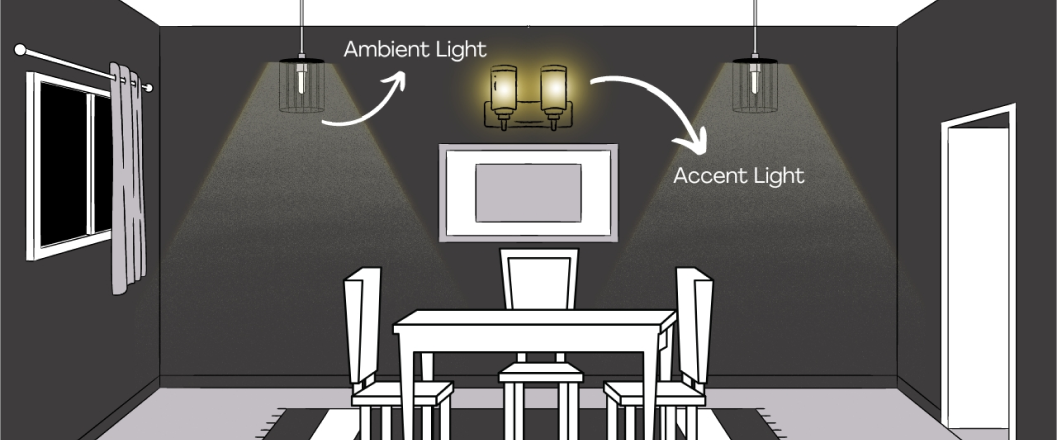
Ambient Lighting:
Ambient lighting is also called common lighting. The lighting that generally lights the room up is the most important, as it is responsible for lighting the room up.Examples include - ceiling fixtures, chandeliers, and wall sconces.
Accent Lighting:
Accent lighting can pinpoint any area of your room, helping you see specific points of your room, such as artwork.Examples include - track lights, picture lights, and spotlights.
Task Lighting:
Task lighting provides illumination for specific tasks or activities. It's used as targeted light only where needed.Examples include - desk lamps, reading lights, and under- cabinet lights.
Ambient lighting is also called common lighting. The lighting that generally lights the room up is the most important, as it is responsible for lighting the room up.Examples include - ceiling fixtures, chandeliers, and wall sconces.
Accent Lighting:
Accent lighting can pinpoint any area of your room, helping you see specific points of your room, such as artwork.Examples include - track lights, picture lights, and spotlights.
Task Lighting:
Task lighting provides illumination for specific tasks or activities. It's used as targeted light only where needed.Examples include - desk lamps, reading lights, and under- cabinet lights.
Types of Wall Lights:
Wall lights come in various types and sizes, offering functionality and aesthetic appeal. Here are some common types of wall lights used in home interiors and home design.
Sconces:
Sconces mounted on either side of the bed serve a function like reading or relaxing, eliminating the need for table lamps that free up your nightstand space.
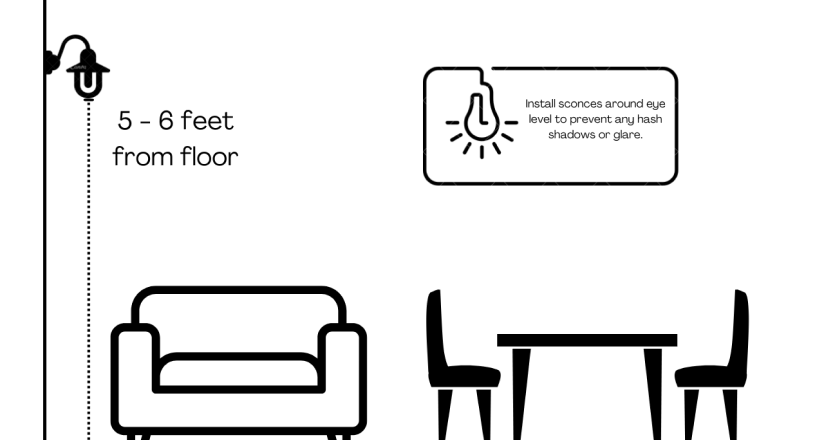
A sconce is a wall-mounted light that can be used for decoration. It provides ambient and accent lighting, adding a welcoming and warm appeal to the house.
sconces are known for their decorative appeal. Available in a wide range of styles, from sleek and modern to ornate and traditional, they can complement any interior design scheme, adding a touch of elegance and sophistication to walls.
Sconces offer the opportunity to play with light and shadow, creating visual interest and depth within a space.
Best places to place sconces:
sconces are known for their decorative appeal. Available in a wide range of styles, from sleek and modern to ornate and traditional, they can complement any interior design scheme, adding a touch of elegance and sophistication to walls.
Sconces offer the opportunity to play with light and shadow, creating visual interest and depth within a space.
Best places to place sconces:
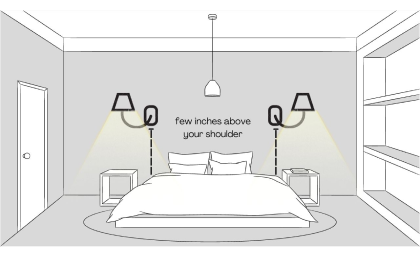
Beside the bed in the bedroom
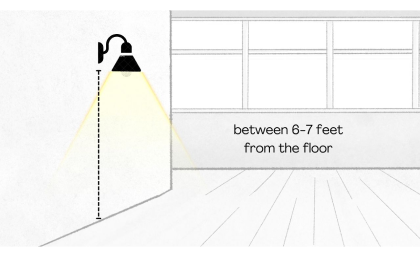
Along corridors and hallways
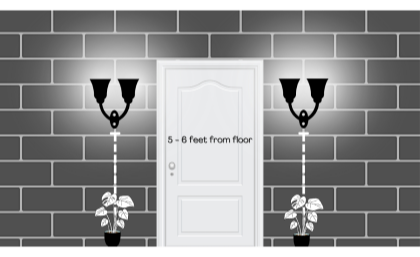
Near entry doors and entryways
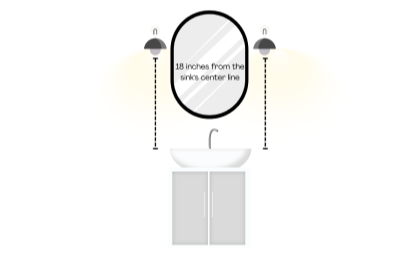
Flanking a bathroom mirror
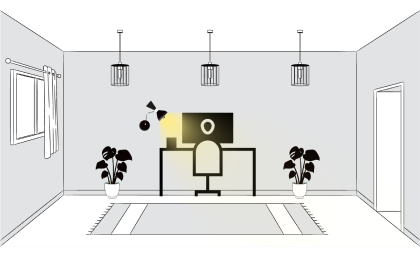
Near a desk in a home office
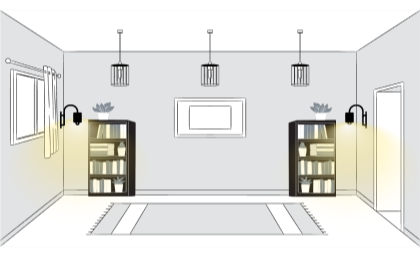
Along bookshelves in a library

On exterior walls for outdoor lighting
Double Sconce Wall Lights
Double sconce wall light is the wall light which have 2 light source connected to a single base plate. They are a versatile wall light which can be used in indoor spaces to provide both functionality and aesthetic appeal.
Recommended Height:
Similar to armed wall lights, double sconce wall lights are usually mounted at eye level or slightly higher, around 5 to 6 feet from the floor.
Similar to armed wall lights, double sconce wall lights are usually mounted at eye level or slightly higher, around 5 to 6 feet from the floor.
Ideal Location:
Double sconce wall lights are versatile and can be used in various spaces such as bathrooms, bedrooms, and dining rooms.
Double sconce wall lights are versatile and can be used in various spaces such as bathrooms, bedrooms, and dining rooms.
They provide balanced illumination and are often placed on either side of mirrors, beds, or focal points like fireplace mantels to create symmetry and enhance the overall aesthetic.
Picture Lights
Picture lights are specially designed to enhance the visual appeal of photographs, paintings, and artwork by directing light into small pieces without causing damage or distortions.
- Above artwork or paintings in the living room
- Along a gallery wall to highlight multiple pieces of artwork
- Above a focal point or decorative feature in any room
- Illuminating family portraits or photographs in a hallway
- Over a mantel or shelf displaying sculptures or collectibles
- Highlighting a statement mirror in the entryway or bedroom
- Enhancing the visual appeal of a statement piece of furniture, such as a console table
- Above a display cabinet showcasing prized possessions or memorabilia
- Over a bookshelf or display shelf in a study or library
- In a home office to spotlight diplomas, certificates, or inspirational quotes
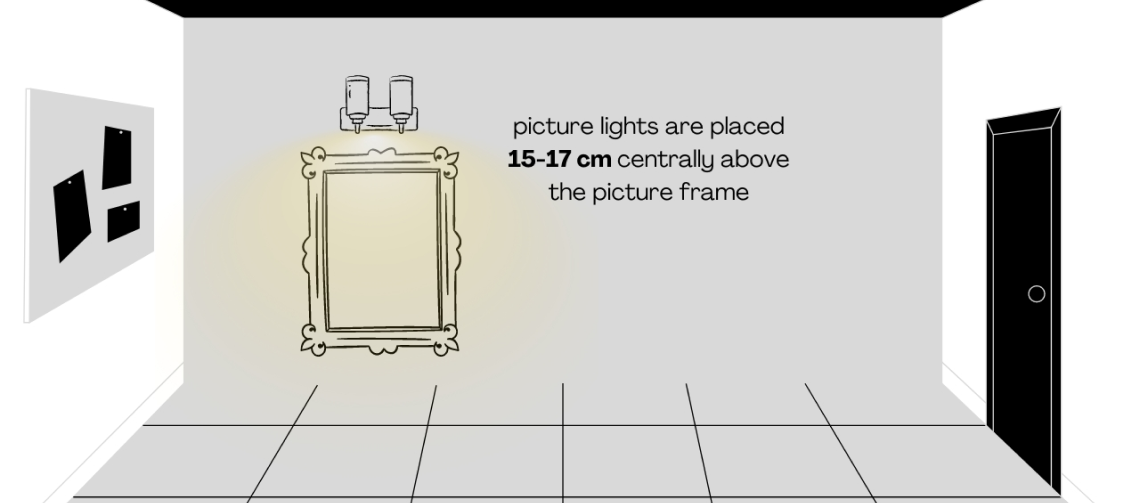
Ideally picture lights are placed 15-17 cm centrally above the picture frame. General rule is to avoid placing the picture light to close to the artwork and to prevent the light casting any shadows on the artwork.
Picture Lights highlight the details and colors of the artwork. Incorporating picture lights in your house will captivate viewers and transform your house into a professional art gallery-style setting.
Swing-Arm Wall Light:
Swing-arm are adjustable lighting lamps mounted on walls. They are versatile and unique in that you can swing them and change their position by directing light to the desired place. There are different types of swing-arm lighting, including
- Articulating Arm Lights:
- Counterbalance Arm Lights:
- Gooseneck Lights:
- Wall Sconces with Swing Arms:
- Pendant Lights with Swing Arms:
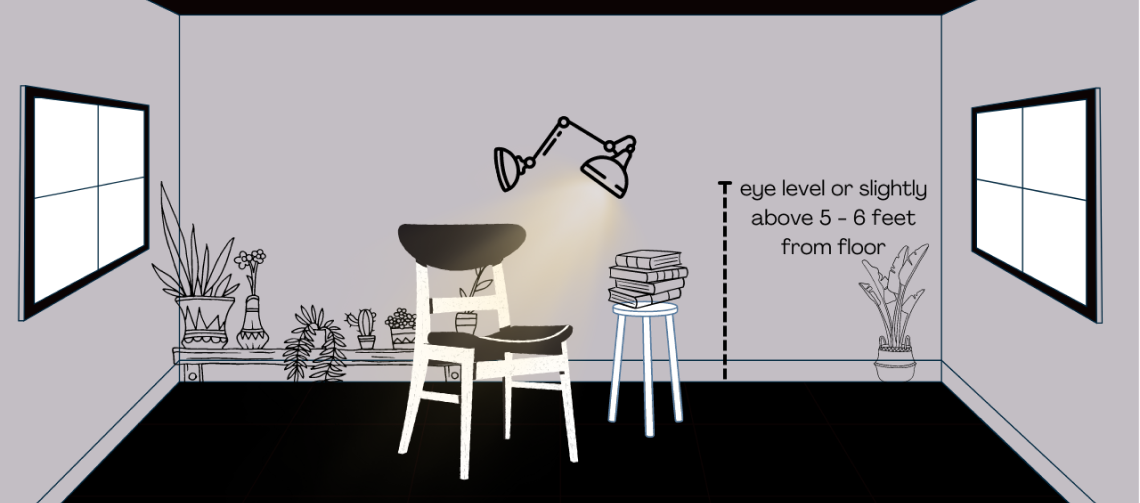
Ideal Location:
Swing arm wall lights are excellent for reading nooks, bedside lighting, or areas where adjustable task lighting is needed. They can be positioned next to chairs, beds, or desks, allowing users to adjust the light direction according to their needs.
Swing arm wall lights are excellent for reading nooks, bedside lighting, or areas where adjustable task lighting is needed. They can be positioned next to chairs, beds, or desks, allowing users to adjust the light direction according to their needs.
Hanging Wall Light:
Hanging wall lights are wall mounted lights like pendant lights or wall lanterns which are mounted vertically. These are very versatile lights that can be used in indoors and outdoors
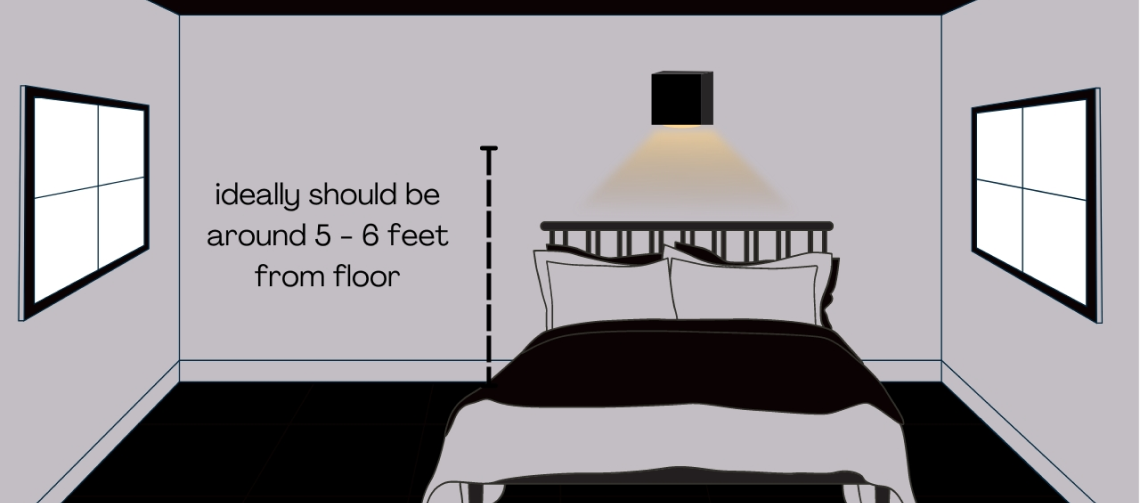
Recommended Height:
The height of hanging wall lights can vary based on design and intended purpose.Typically, they are mounted higher than other wall lights to allow for adequate clearance below, often around 6 to 7 feet from the floor.
The height of hanging wall lights can vary based on design and intended purpose.Typically, they are mounted higher than other wall lights to allow for adequate clearance below, often around 6 to 7 feet from the floor.
Ideal Location:
Hanging wall lights, such as wall lanterns or pendant-style fixtures, are commonly used outdoors to illuminate entryways, patios, or porches. They provide both functional lighting and enhance the exterior aesthetics of the space, outdoor hanging wall lights should be waterproof.
Hanging wall lights, such as wall lanterns or pendant-style fixtures, are commonly used outdoors to illuminate entryways, patios, or porches. They provide both functional lighting and enhance the exterior aesthetics of the space, outdoor hanging wall lights should be waterproof.
Vanity Lights:
Vanity lights are specially designed for bathrooms and dressing tables. They provide illumination and aesthetic appeal to the user. Here are some popular types of vanity lighting.
- Wall Sconces
- Picture Lights
- LED Strip
- Bollywood-Style Vanity Lights
Vanity lights are typically installed above or alongside bathroom mirrors at a height that provides even illumination across the face without causing shadows. The recommended height for mounting vanity lights is generally around 75 to 80 inches from the floor. However, this can vary based on factors such as the height of the individuals using the vanity and the size of the mirror.
Placement and Layout Ideas:
There are many unique placement and layout ideas for designs. Height placement is one of the most important aspects of design. Wall lights should be around 152-170 cm (5-5.5 ft) above the floor level.
Furthermore, wall lights should be spaced 250-300 cm (8-10 ft) apart. The top of the wall light should be at eye level to avoid glare or irritation.
Furthermore, wall lights should be spaced 250-300 cm (8-10 ft) apart. The top of the wall light should be at eye level to avoid glare or irritation.
Styling Tips:
Choosing Wall Light Designs that Complement Your Decor Style:
When selecting wall lights, choose designs that seamlessly blend with your interior design aesthetic. Whether your style is modern, traditional, rustic, or eclectic, countless options are available to complement your unique decor.
Mixing and Matching Different Wall Light Styles:
Consider mixing and matching different wall light styles within the same space for a more visually interesting and eclectic look. This approach can add depth and character to your interior while reflecting your taste.
Considering Finishes:
The finish of your wall lights can greatly impact the overall aesthetic of your space. Select finishes like brass, chrome, matte black, or aged bronze that complement your existing hardware and fixtures, creating a cohesive and harmonious look.
When selecting wall lights, choose designs that seamlessly blend with your interior design aesthetic. Whether your style is modern, traditional, rustic, or eclectic, countless options are available to complement your unique decor.
Mixing and Matching Different Wall Light Styles:
Consider mixing and matching different wall light styles within the same space for a more visually interesting and eclectic look. This approach can add depth and character to your interior while reflecting your taste.
Considering Finishes:
The finish of your wall lights can greatly impact the overall aesthetic of your space. Select finishes like brass, chrome, matte black, or aged bronze that complement your existing hardware and fixtures, creating a cohesive and harmonious look.
Conclusion:
Wall lighting is a very noticeable and transformative addition to any living space. It is versatile and goes much beyond mere illumination. Strategically placing wall lights in your interior design can enhance the ambiance of the room, highlight the architectural features, and add functionality by incorporating task lighting.
Also Read - How to Clean Your Lamps and Lights
Check out Whispering Homes premium collection of wall lights, which offers a wide range of styles, finishes, and placement options.
Also Read - How to Clean Your Lamps and Lights
Check out Whispering Homes premium collection of wall lights, which offers a wide range of styles, finishes, and placement options.
Thank you for reading! For feedback or inquiries about our products, feel free to reach out via WhatsApp



